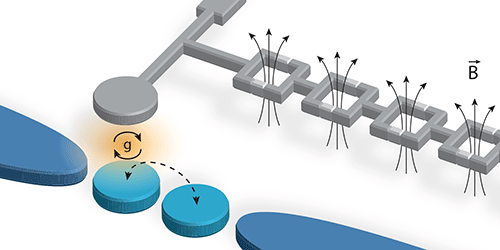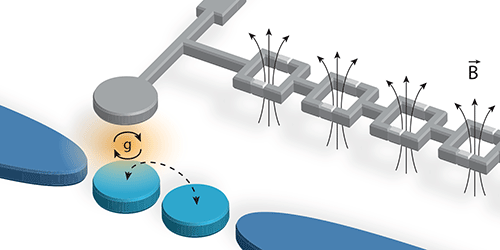Strong Light-Matter Coupling in a Hybrid System
Designs for quantum processors often call for data in solid-state qubits to be transferred into light signals and back again. For this reason, researchers have been developing systems with a strong coupling between light and matter, defined as an energy exchange rate greater than the energy loss rate. A new device consisting of a quantum dot and a superconducting cavity achieves the strongest light-matter coupling so far in this type of hybrid system. The scheme, which is generally applicable to a wide variety of chip architectures, could be used to connect distant qubits with microwave photons.
Early efforts to enhance light-matter coupling focused on atoms inside optical cavities, where single atoms exchange energy with one of the cavity’s modes. With considerable effort, researchers were able to generate a strong coupling. Only recently has strong coupling been achieved in semiconductor hybrid systems. Here, the atoms are replaced by semiconductor nanostructures that behave like artificial atoms and the cavities are superconducting circuits that resonate at radio or microwave frequencies.
The new hybrid system from Andreas Wallraff’s team at the Swiss Federal Institute of Technology (ETH) in Zurich involves capacitively coupling the charge excitations on a double quantum dot to microwave photons in a cavity that contains 32 SQUIDs (superconducting quantum interference devices). The SQUID array gives the cavity a uniquely high impedance (1800 ohms), which means the quantum fluctuations in the cavity have a large electric field component, rather than a magnetic one. These electric fluctuations interact with the charges in the dot, leading to a strong cavity-dot coupling that is significantly larger than in other hybrid systems built with standard (50-ohm) impedance technology.
This research is published in Physical Review X.
–Michael Schirber
Michael Schirber is a Corresponding Editor for Physics based in Lyon, France.





